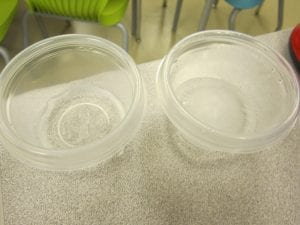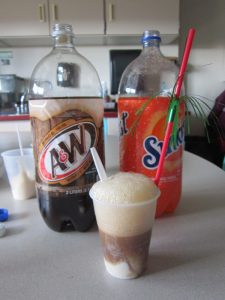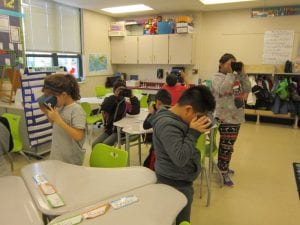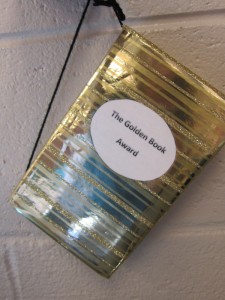On Thursday, 12/20 we celebrated excellent student behavior with our monthly Star party. Each day our Students are Taking Academic Responsibility by making good choices at school. They start the day with 4 stars and try to keep them all day or even earn an extra star for excellent behavior. Teachers kept track of student scores all month and averaged them to see who was invited to celebrate good behavior at our S.T.A.R. Party. Any student that averaged 3.5 stars or higher was invited to enjoy a root beer or orange soda float while we watched “Frosty the Snowman”. Students who averaged 4 stars or higher were “Rock Stars” and got to use a festive straw to drink their float which could be taken home afterward. Now we’ll begin working on making good behavior choices for January.
Month: December 2018
Antarctica
Today our class had the amazing opportunity to connect via video feed to a scientist on Antarctica! Jean Pennycook is a researcher who travels to Antarctica each year for a few months to research and study Adelie penguins. A few schools across the country were able to connect to her with the help of the Denver Museum of Nature and Science. Jean shared some interesting facts with us (Did you know penguins have long legs but there body hangs down over them like a coat?) and showed us live images of penguins sitting on their eggs and taking turns with their mate to keep the eggs warm. It is summer in Antarctica now, but is still below freezing. Jean shared her stark living conditions (a tent with no heat, no toilet, and no running water) as well as her love of returning year after year to learn more about these amazing animals. Jean has written a book that we were able to look through as well. A special thanks to Mrs. Blankley for setting up this learning opportunity and inviting our class to join in!!




Exploring Circuits
This week in Science we learned about closed circuits (they allow electricty to flow through a path) and open circuits (they do not allow electricity to flow). We assembled circuits and then tested materials to determine if they are conductors or insulators. Conductors are objects or materials that allow the flow of electricity. The bulb still lights up whey they are included in the circuit. Insulators block the flow. When students placed these materials in the path of the circuit, the bulb did not light up.


Virtual Reality
Yesterday our Language Arts class experienced Virtual Reality with Google Expedition. We are learning about careers during this module, and many students are curious to learn more about veterinarians. Using goggles, each student was “transported” to spend a day with veterinarian Emily Jones. Emily makes visits to farms and sees animals at her veterinary practice. We viewed scenes of Emily visiting sheep at a farm, welcoming an owner in her waiting room, caring for a rabbit’s teeth, de-horning a goat kit, and performing surgery on a dog. The students were fascinated with their ability to “look around” each of these locations. Our Virtual Reality experience gave students the chance to “see” some of what we’ve been reading in books and articles about veterinarians.

November STAR Party
On Friday we celebrated excellent student behavior with our monthly Star party. Each day our Students are Taking Academic Responsibility by making good choices at school. They start the day with 4 stars and try to keep them all day or even earn an extra star for excellent behavior. Teachers kept track of student scores all month and averaged them to see who was invited to celebrate good behavior at our S.T.A.R. Party. Any student that averaged 3.5 stars or higher was invited to B.Y.O.D. (Bring Their Own Device) for a half hour of fun. Those who didn’t have an electronic device were able to use their school laptop to play games. Students who averaged 4 stars or higher were “Rock Stars” and got to chew gum during the party. I’m so excited to announce that we had an entire homeroom of Rockstars! Now we’ll begin working on making good behavior choices for December.
Matter Experiments
We are learning about Matter during science. We have done 3 cool experiments so far.
Mixing Solid and Liquid
Students experimented with adding drops of liquid (vinegar) to solids (flour, sugar, salt, baking soda). They used a pipette (dropper) to drop a little liquid at a time. We took time to observe and record what happened. The most exciting step was watching the gas bubbles created when the vinegar was added to the baking soda.
Our next experiment was to see if we could harness the gas created by mixing vinegar and baking soda and use it to inflate a balloon. It worked! We tied off the balloon and noticed that the gas was very dense because the balloon dropped quickly to the table compared to a balloon filled with air. We also observed that some liquid was carried into the balloon with the gas and it felt very cold when we passed around the balloon.


Adding and Removing Heat
For our final experiement we predicted what would happen to a few solids if we added heat. The solids we experimented with were chocolate, ice, and mini marshmallows. We heated water and poured it into a bowl to make a double-boiler. Then we placed the solids in a bowl and observed them. Our water was about 120 degrees Farenheit. This amount of heat was enough to melt the ice and soften the chocolate. Next Mrs. Fox took the chocolate and marshmallow bowls to the microwave to see if adding more heat would change the solids. We concluded that if enough heat is added, most solids will melt into a liquid.
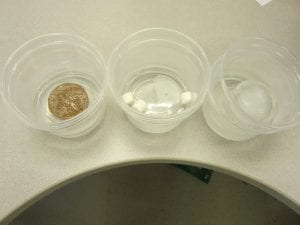 For the second part of our experiement we predicted what would happen if we removed heat from a liquid. We put 2 containers of water in places where we thought they might be cold…the freezer and outside.
For the second part of our experiement we predicted what would happen if we removed heat from a liquid. We put 2 containers of water in places where we thought they might be cold…the freezer and outside.
